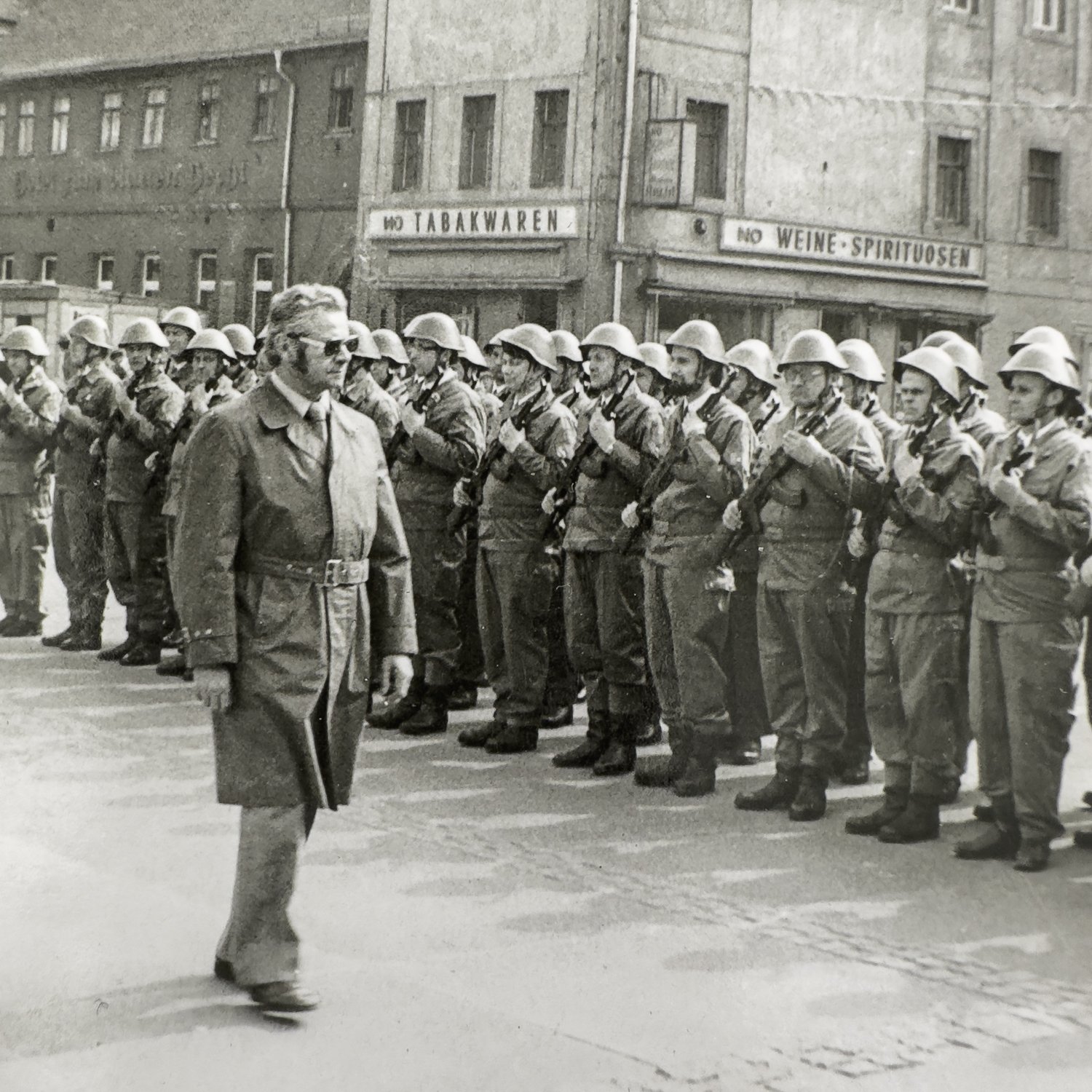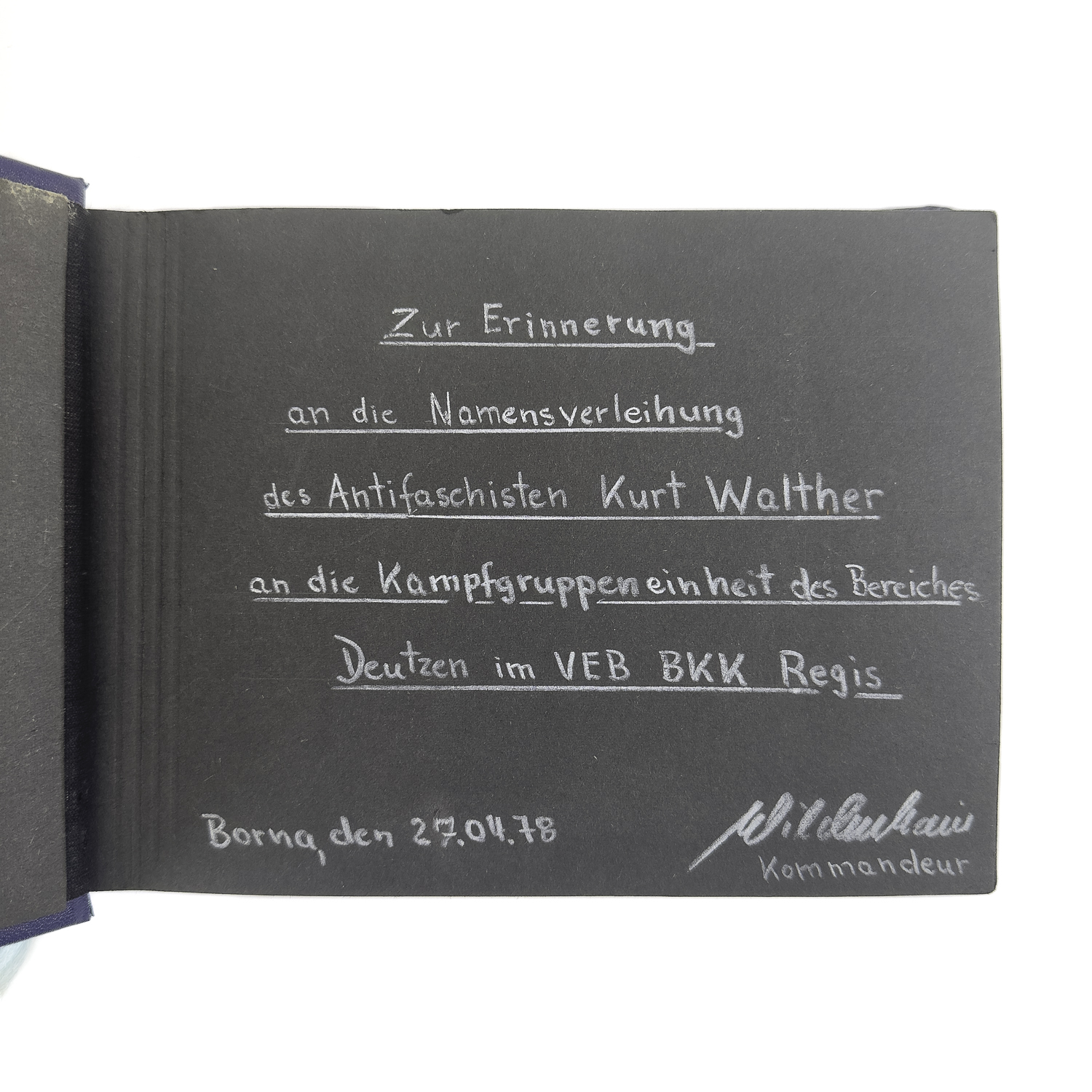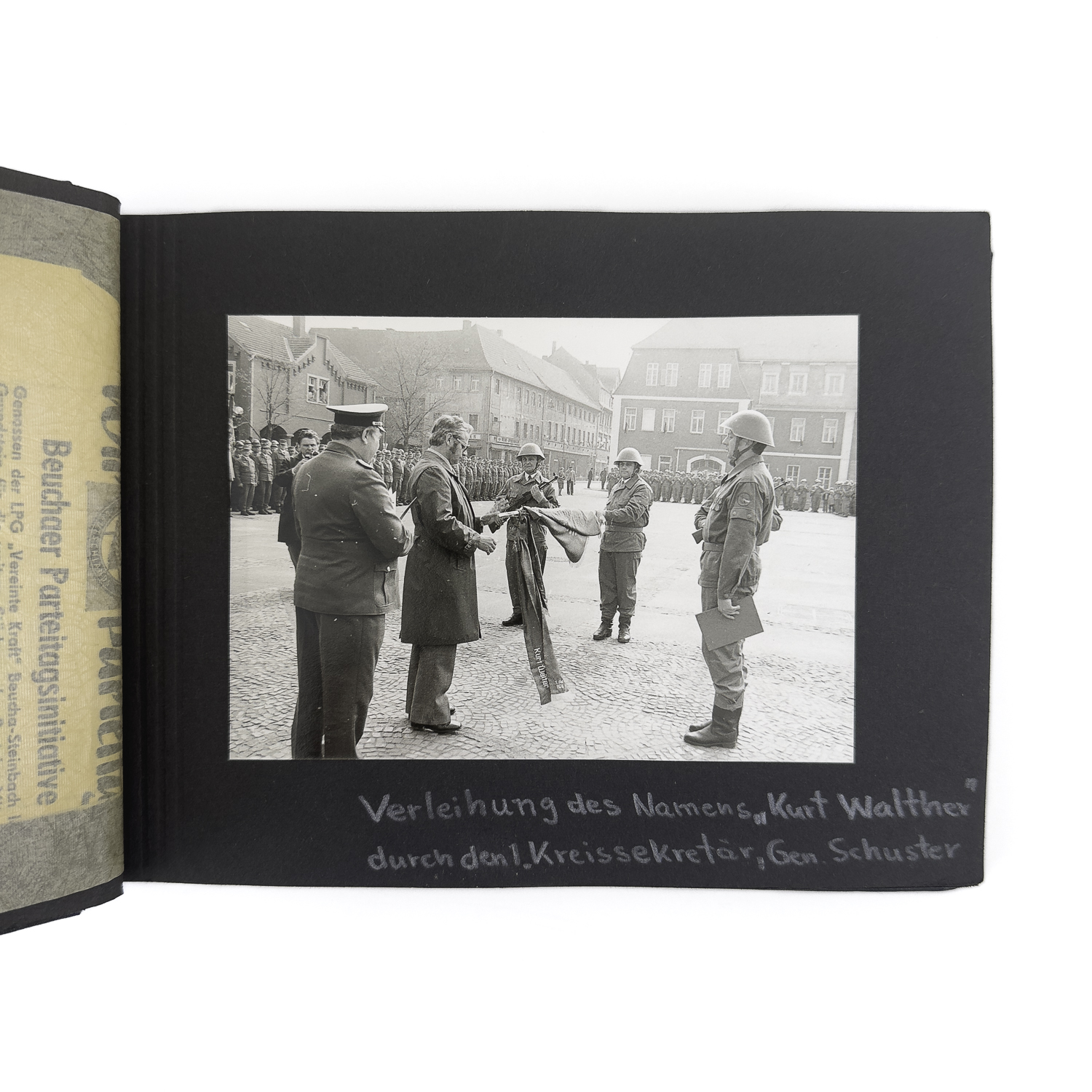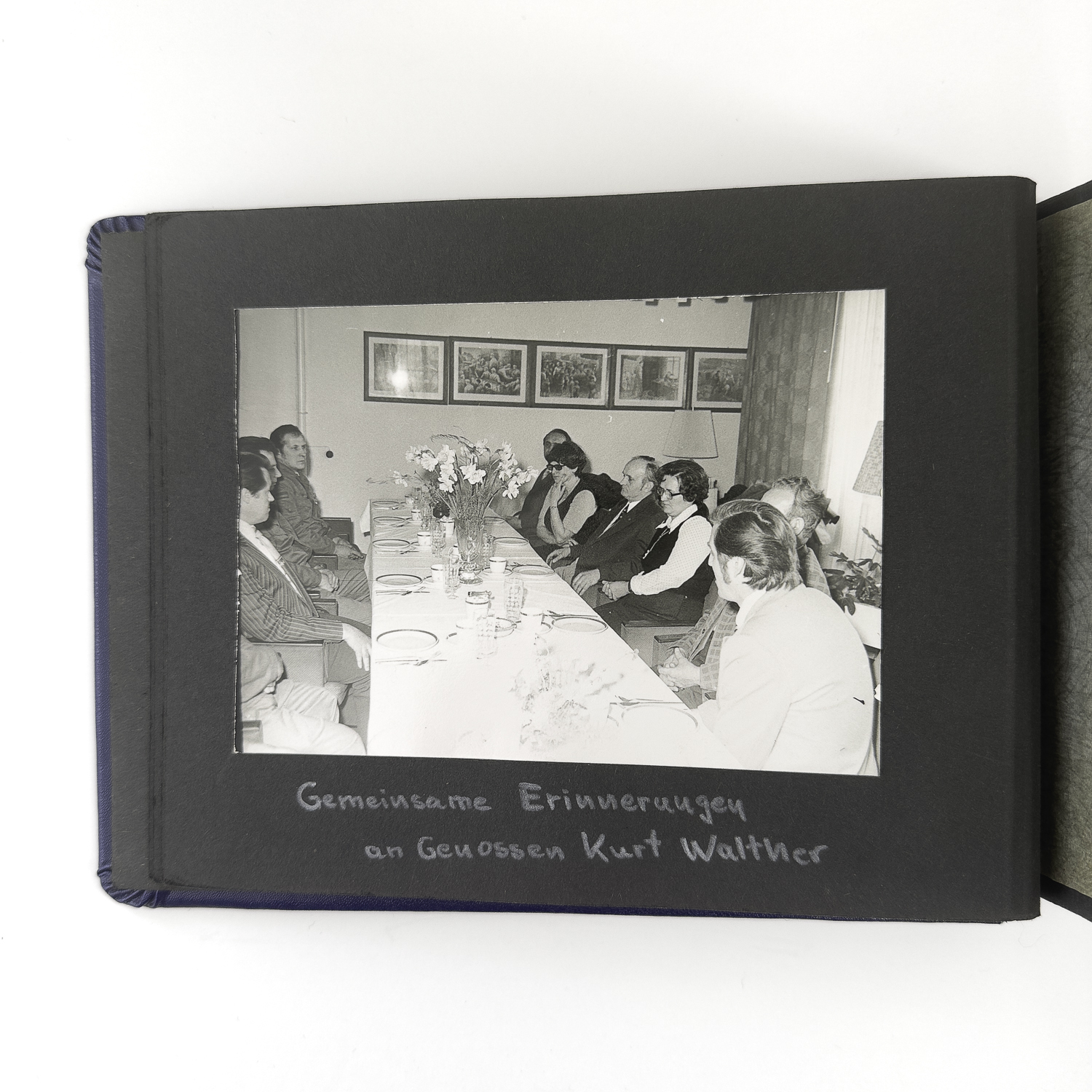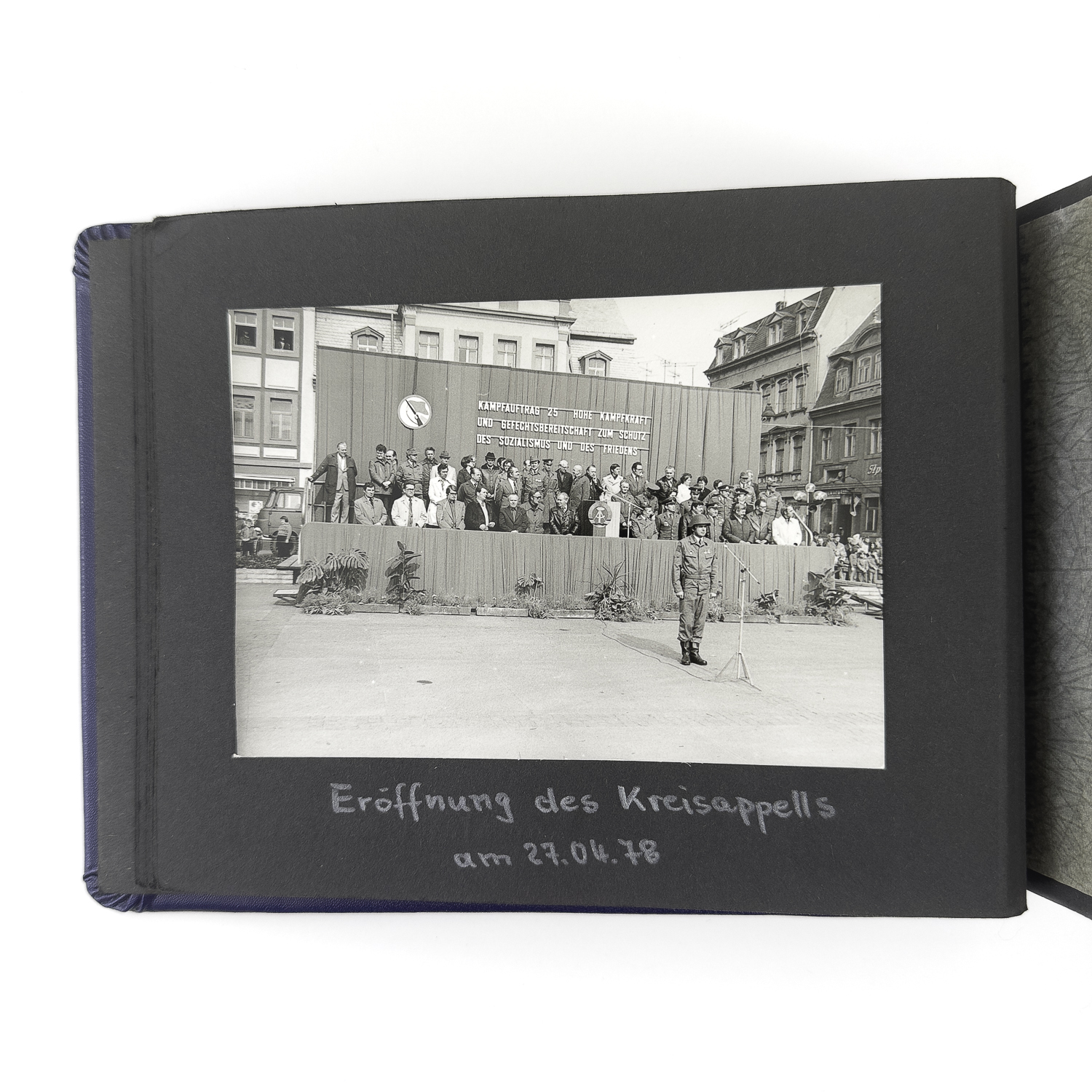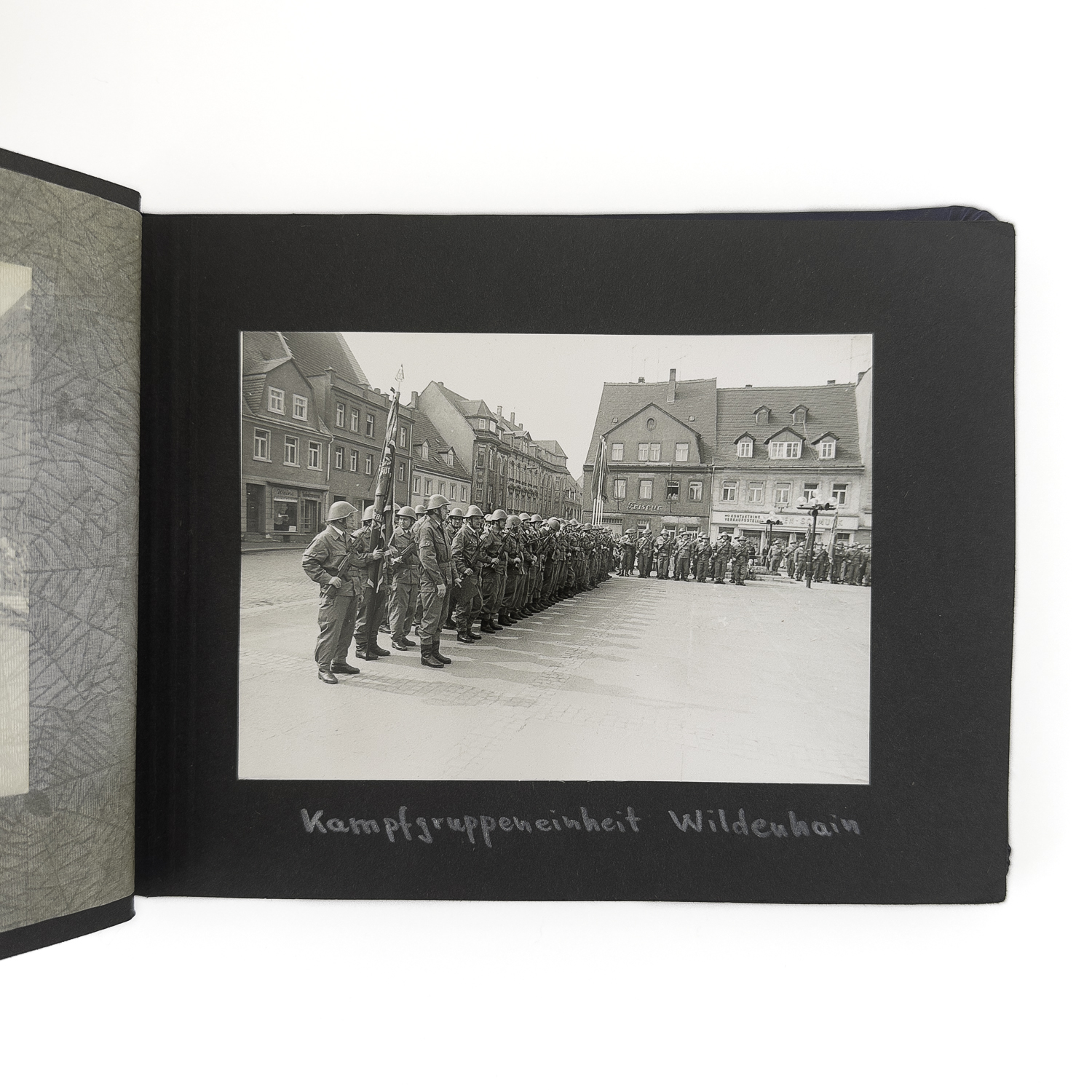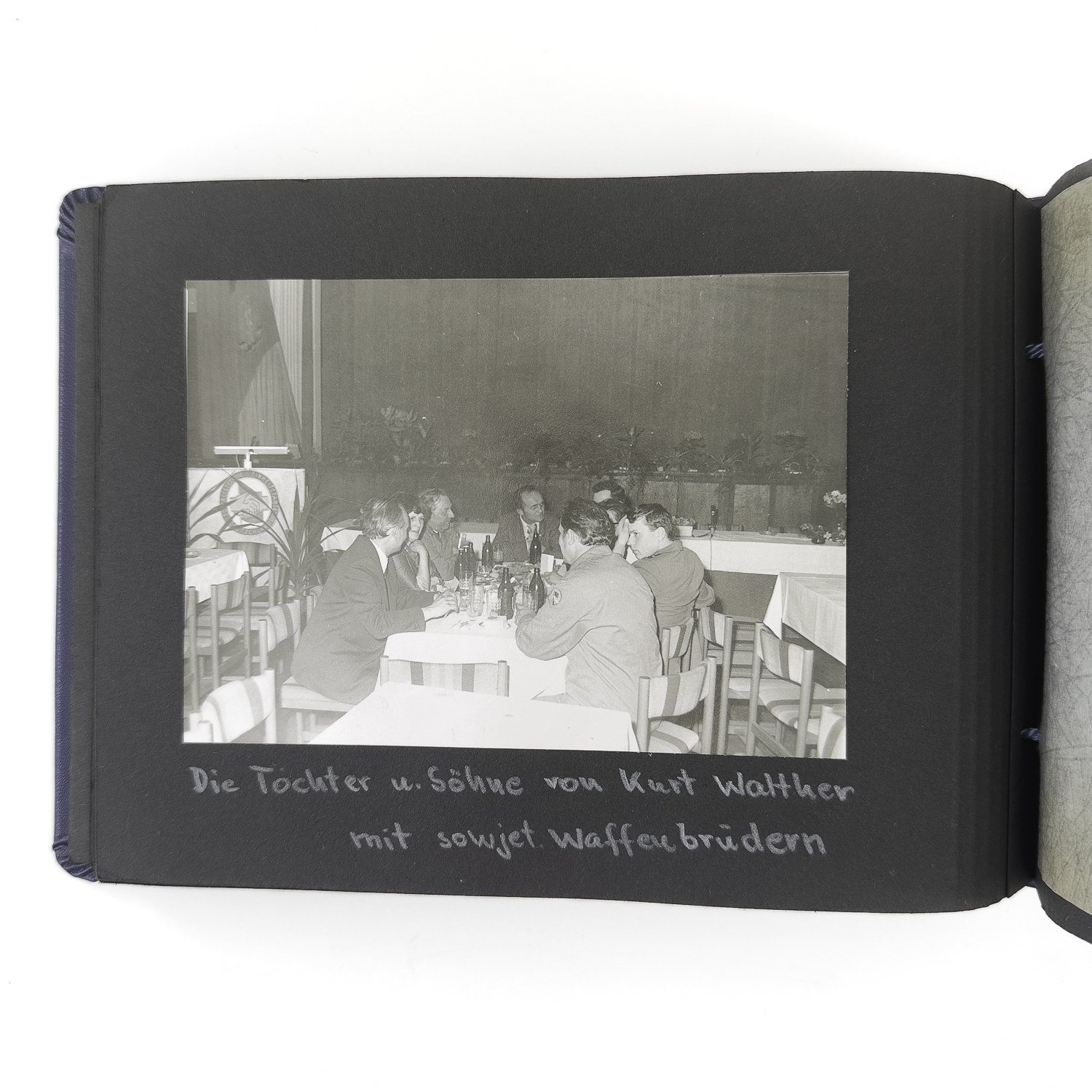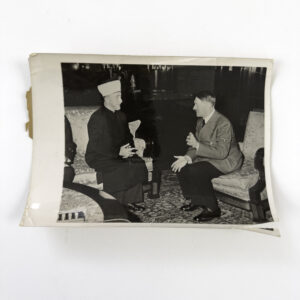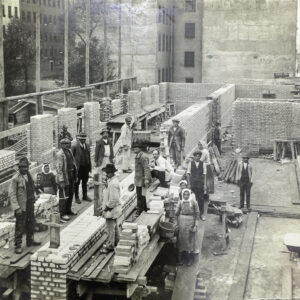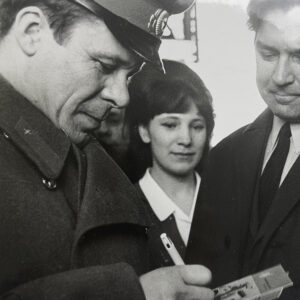J29. Honoring an Anti-Fascist in East Germany I
To be an Anti-Fascist and steadfast member of the Communist Party during Nazi times was risky and illegal. Those who stood up to National Socialism during the 1930’s and 1940’s were revered and honored in East Germany.
This album honors the life of the Anti-Fascist Kurt Walther (1905-1966). Walther joined the Communist Youth in 1923, and in 1926 joined the Communist Party of Germany and was an active functionary within the party, in communist sports clubs, and communist unions. According to the enclosed newspaper article the [“Fascist terrorists”] interned him in a concentration camp for his beliefs. After the war and in East Germany he quickly rose in the ranks and held numerous honors including the Bronze Medal of Honor, Fighter Against Fascism, and the Merit Medal (“Vaterländischen Verdienstordens in Bronze, Fritz Heckert Medaille, Medaille Kämpfer gegen den Fascismus, Verdienstmedaille der DDR.”).
In this album, a division of the Combat Groups of the Working Class (“Kampfgruppen der Arbeiterklasse”) is named in honor of Kurt Walther. The album documents the “naming” ceremony and related dinner and events wherein the family members of Walther are honored for his lifelong fight against Fascism.
The Combat Groups was a paramilitary organization in East Germany. It served as the de facto militia of the ruling Socialist Unity Party and politically reliable working people were trained and available to fight civil unrest and invasion. This particular division was stationed at a major coal strip mine and related power plant known as the VEB Braunkohlenkombinat Regis – the strip mine remains in operation today and its massive footprint can be easily seen on Google earth.
A unique insight both into East Germany’s de facto militia, the Combat Groups of the Working Class and the East German government’s efforts to rehabilitate and honor those who supported their ideology well before it was either legal or fashionable to do so.
